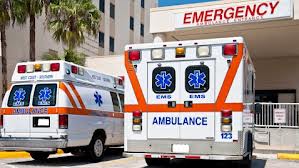Have you ever been in a hospital emergency room?
If so, you no doubt have agitated memories of lights that are just a little too bright, an eerie calm alternating with frenzied activity, and the over-riding sense of all definitely not being right in your world. At least this is how I remember it.
It all started one day when I was forcefully “encouraged” to take an ambulance from my doctor’s office to the hospital. I have a vague memory of something about low oxygen in my blood and pneumonia in my lungs. Oddly, what sticks in my mind more than the diagnoses that landed me in that ambulance is the efficiency and kindness of the Emergency Medical Technician team who seemed to know, not only how to keep me calm, but also just what my body needed during those initial crucial minutes. (They also, by the way, were remarkably skilled at speedily navigating my city’s crammed freeways – and at rush hour no less.)
So, even before I got to the hospital, the value of a diverse team working to get me healthy was already sinking in – skill at communicating, the ability to drive carefully and efficiently, and the knowledge of medical protocols. It was once I got to the hospital, however, that the importance of diversity to my recovery really set in.
If ever you’ve been admitted to that mysterious area behind the emergency check-in desk, you know that there’s lots of waiting time. All that sitting – or, I should say, laying – around may be aggravating, but it does afford the advantage of observing what is going on. In my case, I had the opportunity to watch what happened after the announcement of a “code blue” resonated throughout the room.
Vaguely remembering from some TV show that code blue means that a patient is in real trouble, I wasn’t surprised when the team, who, just a moment before, had been chatting amiably, scattered in all directions. It was as if an invisible quarterback had called the number of a play and everyone knew exactly where to go and what to do.
As I think back on that frenzied scene, I have to ask this question: As the team struggled to save the patient’s life, did their diversity matter? Of course I wasn’t privy to just what went on inside that desperate patient’s room, but I’d observed enough of the emergency team to make a reasonable guess at an answer: You bet it did!
This article is excerpted from Sondra’s book, The Diversity and Inclusion Handbook.
Sondra Thiederman can be contacted for virtual presentations and panel participation by e-mailing her here or calling 619-583-4478. For additional information, go to the Meet Sondra page on this site.
© copyright 2013 Sondra Thiederman, Ph.D.
Feel free to re-print this article as long as copyright and web site (www.thiederman.com) information are attached.

